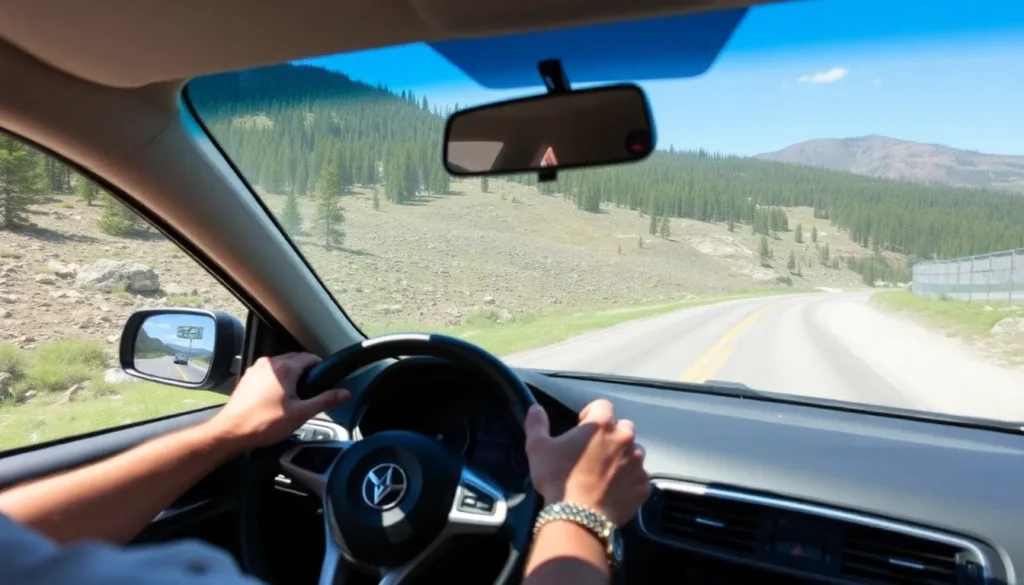8 tips for safe mountain driving and risk reduction

Driving through mountainous regions can be a thrilling yet challenging experience. From breathtaking views to unpredictable weather, the journey can quickly turn daunting if you are not adequately prepared. To help you navigate these winding roads safely, we present you with these 8 essential tips for driving in the mountains that can significantly reduce risks and enhance your travel experience.
1. Inspect your vehicle and equip yourself properly
While performing a vehicle check is generally advisable for any trip, it becomes even more crucial when tackling mountainous terrain. The steep inclines and declines exert additional pressure on critical vehicle components. Thus, it’s vital to check the tire pressure, the brake system, and suspension systems. Make sure all fluid levels are sufficient, inspect the tread of the tires, and ensure your spare tire and jack are in good condition.
Moreover, it's wise to carry essential equipment, including safety chains, which are mandatory on many mountain roads. Consider having a portable air compressor for quick tire adjustments, and a jumper cable for battery issues. We also recommend keeping a fully charged power bank, USB cables for your mobile devices, and a compact first aid kit in your vehicle.
2. Fill your gas tank
Many drivers underestimate the fuel demands associated with driving uphill. The effort required to climb steep grades can consume more gasoline than regular driving conditions would. To avoid anxiety-inducing moments when glancing at the fuel gauge, start your journey with a full tank.
Keep in mind that gas stations in mountainous areas can be sparse, and prices may be higher than usual. Thus, ensuring your tank is full before embarking on your adventure is not just a tip; it’s a necessity.
3. Plan your route
While modern navigation tools like smartphones and GPS units are helpful, they sometimes fail in remote mountainous regions. According to the U.S. National Park Service, these devices can become unreliable in certain areas. Therefore, it’s advisable to take the time to map out your journey using a classic paper map, especially if you are towing a trailer or caravan. Many maps indicate elevation changes, allowing you to choose less strenuous routes.
4. Check weather and traffic conditions
Before setting off, allocate time to review the weather conditions and forecasts for your intended route. Websites like Aemet can provide valuable weather updates. If severe weather warnings are in effect, it’s prudent to postpone your travel plans.
Additionally, checking traffic conditions is equally vital. Utilizing apps like Google Maps can help you monitor real-time traffic updates. Keeping your data connection active during the journey will allow you to receive ongoing updates.
5. Drive with heightened caution
Although it might be tempting to admire the stunning landscapes, your primary focus should be on driving safely. Mountain roads are often narrow, and drifting into the opposite lane can lead to dangerous situations, especially in curves. Remember that such behavior is not only hazardous but also inconsiderate to other drivers.
- Watch for cyclists, who often share these roads but can move much slower than vehicles.
- Keep an eye out for wildlife that may cross the road unexpectedly.
- Maintain a safe distance from the vehicle ahead to allow for sudden stops.
It’s also advisable to take breaks during long drives to avoid fatigue. If other drivers are anxious to pass you, let them go; it may be a matter of urgency for them.
6. Observe and comply with traffic signs
Staying alert to traffic signs is crucial, especially in mountainous regions where conditions can change rapidly. Pay special attention to signs indicating:
- Mountain pass conditions
- Steep grades
- Potential landslides
- Strong winds
- Slippery roads
- Sharp curves
Be prepared for detours due to roadwork or other hazards and always follow posted instructions. If you must take an unpaved road, ensure you understand your vehicle's limits and your own driving skills.
7. Be prepared for emergencies
Unpredictable weather changes or vehicle malfunctions can leave you stranded on a remote mountain road for hours. Being prepared is essential; pack items such as:
- A blanket and extra clothing
- Plenty of water and non-perishable food
- A flashlight with extra batteries
- A small shovel for snow or mud
- Your previously mentioned first aid kit
Also, keep your fuel tank full to avoid running out of gas during long waits caused by adverse conditions. If your vehicle does stop, it’s generally safer to remain inside until help arrives, as cars are more visible than people in snowy conditions.
Always inform friends or family about your travel itinerary and expected return time.
8. Use your lights properly
We recommend keeping your low beams on during any mountain drive, regardless of the time of day. However, certain situations, such as dusk, dawn, rain, snow, fog, or night driving, necessitate proper lighting for visibility. Ensuring your headlights are functioning and unobstructed is vital.
When approaching oncoming vehicles, dim your high beams promptly to avoid blinding fellow drivers. Remember, common sense and caution are your best companions on the road.
With these tips for driving in the mountains, you're better equipped for a successful and safe journey. Understanding how to prepare your vehicle and navigate mountainous roads can turn a potentially stressful trip into a memorable adventure.
For further insights on driving in mountainous conditions, check out this informative video that covers essential tips:





Deja una respuesta